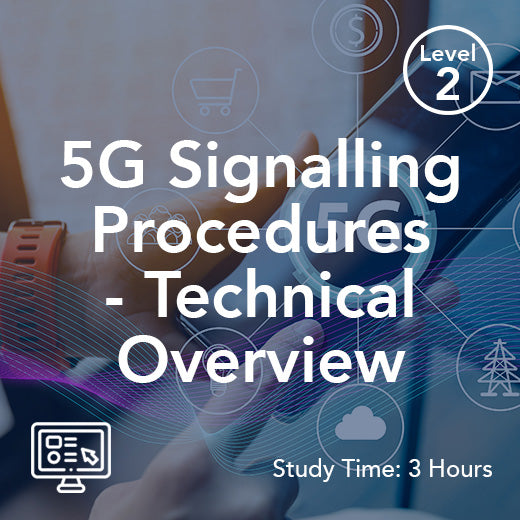Taşıma Bloğu Boyutunu Anlama: Herkes İçin Basit Bir Kılavuz
- , by Stephanie Burrell
- 7 min reading time
İletişim teknolojisinin günlük hayatımızın merkezinde yer aldığı günümüz dünyasında, bu teknolojinin bazı temel bileşenlerini anlamak inanılmaz derecede faydalı olabilir. Bu bileşenlerden biri de veri iletimi alanında sıkça karşılaşılan bir terim olan taşıma bloğu boyutudur. İster en sevdiğiniz diziyi izliyor olun, ister görüntülü görüşme yapıyor olun, ister internette gezinin, taşıma bloğu boyutu, verilerin verimli ve etkili bir şekilde iletilmesini sağlamada önemli bir rol oynar. Bu yazı, bu kavramı herkesin anlayabileceği basit terimlerle açıklayarak gizemini çözmeyi amaçlıyor. Taşıma bloğu boyutunun neleri içerdiğini ve dijital çağda neden önemli olduğunu keşfetmek için bize katılın.
Taşıma Bloğu Boyutuna Giriş
Taşıma bloğu boyutunu anlamak, verilerin ağlar arasında nasıl verimli bir şekilde iletildiğini anlamak için çok önemlidir. Bu bölüm, kavramı tanıtmakta ve günümüzün dijital iletişim ortamındaki önemini vurgulamaktadır.
Taşıma Bloğu Nedir?
Taşıma bloğu, özellikle LTE ve 5G gibi sistemlerde olmak üzere iletişim ağlarında kullanılan temel bir veri birimidir. Esasen, bir noktadan diğerine iletilmek üzere paketlenmiş bir veri parçasıdır. Bu blok, aynı anda ne kadar veri gönderilebileceğini belirlediği ve veri iletiminin verimliliğini ve hızını etkilediği için hayati önem taşır.
Ham verilerin yönetilebilir boyutlara bölündüğü kodlama işlemi sırasında taşıma blokları oluşturulur. Bu, ağların verileri daha etkili bir şekilde işlemesini ve hatasız iletilmesini sağlar. Bu blokların boyutu, ağ koşulları ve kullanılan hizmet türü gibi çeşitli faktörlere bağlı olarak değişebilir.
Taşıma bloklarını anlayarak, ağların veri akışını nasıl yönettiğine dair fikir edinebiliriz. Bu bilgi, modern iletişim teknolojilerinin mekaniğiyle ilgilenen herkes için hayati önem taşır.
Modern Ağlarda Önemi
Taşıma bloğu boyutu, modern ağların performansında önemli bir rol oynar. Veri iletiminin hem hızını hem de güvenilirliğini etkiler ve bu da onu ağ tasarımı ve işletiminde kritik bir bileşen haline getirir.
Günümüzün hızlı dijital ortamında, yüksek hızlı internet ve kesintisiz bağlantıya olan talep sürekli artmaktadır. Taşıma bloğu boyutu, veri aktarım hızını optimize ederek bu taleplerin karşılanmasına yardımcı olur. Daha büyük blok boyutları, özellikle yayın akışı veya çevrimiçi oyun gibi yüksek talep gerektiren senaryolarda gecikmeyi azaltarak ve kullanıcı deneyimini iyileştirerek aynı anda daha fazla veri iletebilir.
Ancak, taşıma bloğu boyutunun önemi hızın ötesine geçer. Ayrıca, ağların çeşitli protokolleri ve standartları nasıl işlediğini de etkiler, veri bütünlüğünü sağlar ve veri kaybı olasılığını azaltır. Taşıma bloğu boyutunu optimize ederek ağlar daha istikrarlı ve verimli bir hizmet sunabilir.
Taşıma Bloğu Boyutu Nasıl Çalışır?
Taşıma bloğu boyutunun nasıl işlediğini anlamak için, kodlama mekaniği ve ağ koşullarının incelenmesi gerekir. Bu bölümde, bu önemli bileşenler ve veri iletimi üzerindeki etkileri incelenmektedir.
Kodlamanın Rolü
Kodlama, taşıma bloğu boyutunu belirlemede kritik bir adımdır. Verilerin iletime uygun bir forma dönüştürülmesini ve ağ üzerinden doğru bir şekilde gönderilip alınabilmesini sağlamayı içerir.
Veri Bölümlendirme : Kodlama, verileri daha küçük parçalara bölerek yönetimi daha kolay taşıma blokları oluşturmakla başlar. Bu bölümlendirme, büyük miktarda bilgiyi verimli bir şekilde işlemek için hayati önem taşır.
Hata Düzeltme : Kodlama, ağın iletim sırasında hataları tespit edip düzeltmesine olanak tanıyan hata kontrol önlemlerini içerir. Bu adım, veri bütünlüğünün korunması için önemlidir.
Sinyal Modülasyonu : Son aşama, sinyalin ağın özelliklerine uyacak şekilde modüle edilmesini, uyumluluğun ve optimum performansın sağlanmasını içerir.
Kodlama, verilerin nasıl paketlenip iletileceğini belirleyerek taşıma bloğu boyutunu doğrudan etkiler. Verimli kodlama uygulamaları, daha hızlı ve daha güvenilir veri iletimi sağlayarak genel ağ performansını artırır.
Ağ Koşullarının Etkisi
Ağ koşulları, taşıma bloğu boyutunu önemli ölçüde etkileyerek veri iletim verimliliğini ve güvenilirliğini etkiler. Bu etkiye katkıda bulunan çeşitli faktörler şunlardır:
Bant Genişliği : Mevcut bant genişliği, aynı anda ne kadar verinin iletilebileceğini belirler. Daha yüksek bant genişliği, daha büyük taşıma bloklarına olanak tanıyarak iletim hızını ve verimliliğini artırır.
Gecikme : Düşük gecikmeli ağlar, önemli gecikmeler olmadan daha büyük taşıma bloklarını işleyebilir ve bu da gerçek zamanlı uygulamalarda kullanıcı deneyimini iyileştirir.
Tıkanıklık : Yüksek tıkanıklık seviyelerine sahip ağlar, veri akışını etkili bir şekilde yönetmek için daha küçük taşıma bloklarına ihtiyaç duyabilir ve bu da paket kaybı riskini azaltır.
Ağ koşulları dinamiktir ve hızla değişebilir; bu da taşıma bloğu boyutlarını optimize etmek için uyarlanabilir stratejiler gerektirir. Bu koşulları anlamak, değişen yükleri kaldırabilen ve güçlü performansı koruyabilen ağlar tasarlamaya yardımcı olur.
Taşıma Bloğu Boyutunu Etkileyen Faktörler
Taşıma bloğu boyutu, bant genişliği, gecikme süresi ve ağ protokolleri gibi çeşitli dış faktörlerden etkilenir. Bu bölümde, bu unsurlar ve veri iletiminin verimliliği üzerindeki etkileri incelenmektedir.
Bant Genişliği ve Gecikme
Bant genişliği ve gecikme, taşıma bloğu boyutunu etkileyen iki kritik faktördür. Veri iletiminin hızını ve verimliliğini belirler ve verilerin nasıl paketlenip gönderildiğini doğrudan etkiler.
Bant genişliği, bir ağ tarafından desteklenen maksimum veri hızını ifade eder. Daha yüksek bant genişliği, daha büyük taşıma bloklarına olanak tanıyarak aynı anda daha fazla verinin iletilmesini sağlar. Bu da daha hızlı internet hızları ve veri yoğun uygulamalar için gelişmiş performans sağlar.
Gecikme, verilerin göndericiden alıcıya ulaşması için geçen süredir. Düşük gecikmeli ağlar, önemli gecikmelere neden olmadan daha büyük taşıma bloklarını işleyebilir. Bu, zamanlamanın önemli olduğu video konferans ve çevrimiçi oyun gibi gerçek zamanlı uygulamalar için kritik öneme sahiptir.
Taşıma bloğu boyutunu optimize etmek için bu iki faktörü dengelemek önemlidir; böylece verinin hızdan veya güvenilirlikten ödün vermeden verimli bir şekilde iletilmesini sağlamak gerekir.
Ağ Protokolleri ve Standartları
Ağ protokolleri ve standartları, taşıma bloğu boyutunun belirlenmesinde hayati bir rol oynar. Veri iletimi için kuralları ve kuralları tanımlar ve verilerin nasıl paketlenip gönderileceğini etkiler.
Protokol Özellikleri : Farklı protokollerin, verinin nasıl bölümlendirilip iletileceğini etkileyen farklı taşıma bloğu boyutu gereksinimleri vardır. Örneğin, LTE ve 5G, optimum performans için blok boyutlarını belirleyen belirli standartlara sahiptir.
Uyumluluk : Sorunsuz veri iletimi için çeşitli ağ standartlarıyla uyumluluğun sağlanması çok önemlidir. Uyumsuz blok boyutları veri kaybına ve ağ verimliliğinin düşmesine neden olabilir.
Yenilik : Yeni protokoller ve standartlar ortaya çıktıkça, taşıma bloğu boyutunun bu değişikliklere uyum sağlayacak şekilde ayarlanması ve ağların en son teknolojileri destekleyebilmesi sağlanmalıdır.
Ağlar, yerleşik protokollere ve standartlara bağlı kalarak taşıma bloğu boyutunu optimize edebilir, veri iletim verimliliğini ve güvenilirliğini artırabilir.
Taşıma Bloğu Boyutunun Pratik Uygulamaları
Taşıma bloğu boyutu yalnızca teknik bir kavram değildir; günlük iletişimi etkileyen gerçek dünya uygulamalarına da sahiptir. Bu bölümde, modern yaşamın çeşitli yönlerini nasıl etkilediği incelenmektedir.
Gerçek Dünyadan Örnekler
Taşıma bloğu boyutu, birçok gerçek dünya senaryosunda önemli bir rol oynar ve çeşitli uygulamalar arasında veri iletimini iyileştirir. Aşağıdaki örnekleri inceleyin:
Akış Hizmetleri : Netflix ve YouTube gibi platformlar, ara belleğe alma olmadan yüksek kaliteli video içeriği sunmak için optimize edilmiş taşıma bloğu boyutlarına güvenir.
Çevrimiçi Oyun : Çok oyunculu çevrimiçi oyunlar, sorunsuz bir oyun deneyimi ve hızlı tepki süreleri sağlamak, gecikmeleri ve kesintileri en aza indirmek için taşıma bloklarını kullanır.
Uzaktan Çalışma Araçları : Zoom ve Microsoft Teams gibi uygulamalar, kesintisiz video konferans ve işbirliğini kolaylaştırmak için taşıma bloğu boyutunu kullanır.
Bu örnekler, verimli veri iletimini sağlamada taşıma bloğu boyutunun önemini vurgulamaktadır. Blok boyutlarını optimize ederek ağlar daha iyi performans sunabilir ve farklı uygulamalarda kullanıcı deneyimini iyileştirebilir.
Günlük İletişimin Faydaları
Taşıma bloğu boyutu günlük iletişimin iyileştirilmesine önemli ölçüde katkıda bulunur ve çeşitli faydalar sağlar:
Daha Hızlı Veri İletimi : Optimize edilmiş blok boyutları daha hızlı veri aktarımı sağlayarak indirme ve yükleme sürelerini azaltır ve genel kullanıcı deneyimini iyileştirir.
Gelişmiş Bağlantı : Verimli taşıma bloğu boyut yönetimi, görüntülü görüşmeler ve çevrimiçi etkinlikler sırasında kesintileri en aza indirerek istikrarlı bağlantılar sağlar.
Gelişmiş Yayın Kalitesi : Verileri daha verimli bir şekilde ileterek, optimize edilmiş blok boyutları kesintilerden veya ara belleğe almalardan uzak, yüksek kaliteli yayın deneyimlerinin korunmasına yardımcı olur.
Bu faydaların günlük iletişime dahil edilmesi, dijital etkileşimlerin güvenilirliğini ve verimliliğini artırarak, ulaşım bloğu boyutunu modern teknolojinin önemli bir bileşeni haline getirir.
Taşıma Bloğu Boyutunun Geleceği
Teknoloji geliştikçe, taşıma bloğu boyutu kavramı da gelişiyor. Bu bölüm, veri iletiminin geleceğini şekillendiren ufuktaki potansiyel yenilikleri ve zorlukları inceliyor.
Ufukta Yenilikler
Taşıma bloğu boyutunun geleceği umut verici; ufukta veri iletim verimliliğini artıracak çeşitli yenilikler var:
Gelişmiş Kodlama Teknikleri : Taşıma bloğu boyutlarını daha da optimize etmek, veri akışını iyileştirmek ve hataları azaltmak için yeni kodlama yöntemleri geliştirilmektedir.
Yapay Zeka Destekli Optimizasyon : Yapay Zeka, gerçek zamanlı ağ koşullarına göre taşıma bloğu boyutlarını dinamik olarak ayarlamak için kullanılıyor ve böylece optimum performans sağlanıyor.
5G ve Ötesi : 5G ağları genişlemeye devam ettikçe, daha yüksek veri hızlarına ve artan cihaz bağlantısına uyum sağlamak için taşıma bloğu boyutlarının uyarlanması gerekecektir.
Bu yenilikler, dijital çağda daha hızlı ve daha güvenilir veri iletiminin önünü açarak, taşıma bloğu boyutlarının nasıl yönetildiği konusunda devrim yaratmayı vaat ediyor.
Zorluklar ve Fırsatlar
Yenilik potansiyeline rağmen, ulaşım bloğu büyüklüğü alanında önümüzde birçok zorluk ve fırsat bulunmaktadır:
Ölçeklenebilirlik : Ağlar büyüdükçe, artan veri hacimlerini karşılamak için taşıma bloğu boyutlarını ölçeklendirmek önemli bir zorluk teşkil etmektedir.
Güvenlik Endişeleri : Taşıma bloğu boyutlarını optimize ederken güvenli veri iletimini sağlamak, güçlü şifreleme ve kimlik doğrulama önlemleri gerektirir.
Ağ Uyumluluğu : Sorunsuz bağlantının sürdürülmesi için farklı ağ protokolleri ve standartları arasında taşıma bloğu boyutlarının dengelenmesi önemlidir.
Bu zorluklar, sürekli araştırma ve geliştirme için fırsatlar sunmakta, taşıma bloğu boyut yönetiminde ilerlemeler sağlamakta ve ağların gelecekte de verimli ve güvenilir kalmasını sağlamaktadır.
A

































